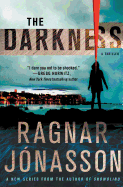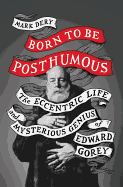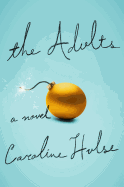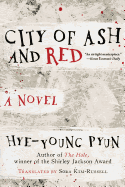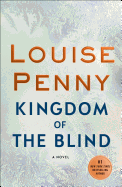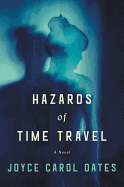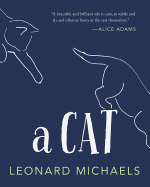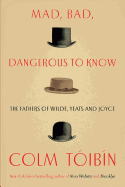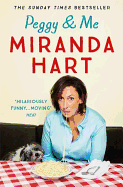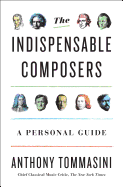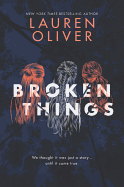Week of Friday, November 30, 2018
_Julia_Scott.jpg) |
|
| photo: Julia Scott | |
Marissa Meyer is the author of the Lunar Chronicles series. The second book in her Renegades trilogy, Archenemies (Feiwel & Friends), was just published.
Though the times we are living in today are safer, cleaner and less violent than any other time in human history, we nevertheless are surrounded by stories of injustice and cruelty: terrorism, global warming, widespread hunger, domestic violence, natural disasters, drug addiction.... We can become overwhelmed by the problems facing society. We might even catch ourselves thinking, if only there were a superhero who could stop this.
Heck... if I were a superhero, then I could stop this.
That's a powerful fantasy, if also a problematic one. We don't have super strength or the ability to fly. But none of us are powerless. When I was writing Renegades and creating the superheroes and villains that populate Gatlon City, I found myself thinking a lot about heroism and how, truthfully, the people of my fictional world have it wrong.
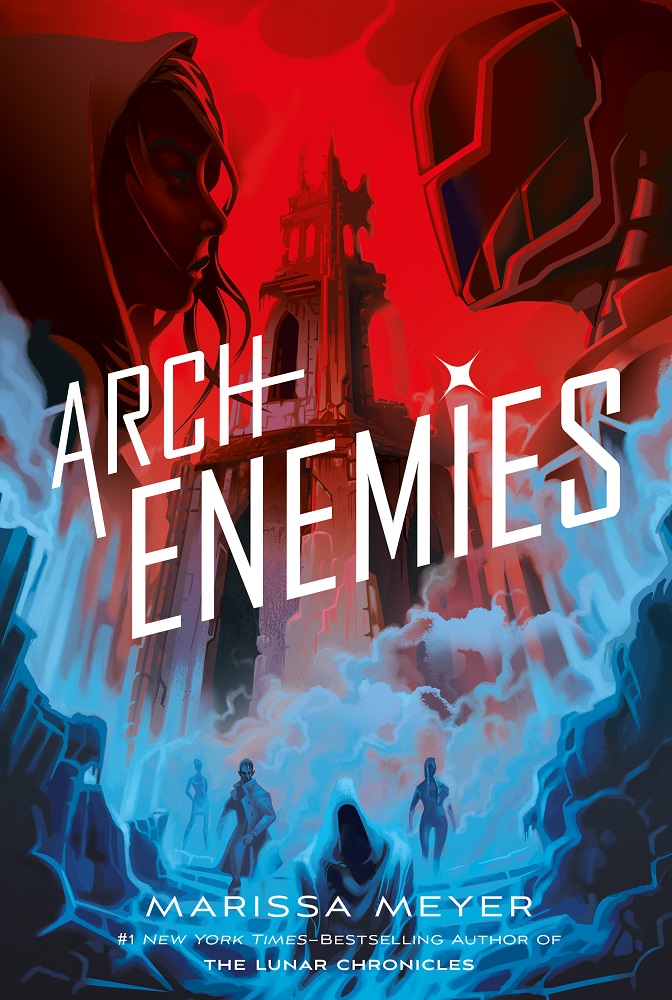 Heroism is not about your abilities, it's about your choices, and we can all choose to do good in this world. There is heroism in giving up a couple hours a week to tutor a struggling student. Or speaking your opinion, even when it goes against the status quo. There is heroism in doing something that we feel in our hearts is right, when it would be easier to do nothing at all.
Heroism is not about your abilities, it's about your choices, and we can all choose to do good in this world. There is heroism in giving up a couple hours a week to tutor a struggling student. Or speaking your opinion, even when it goes against the status quo. There is heroism in doing something that we feel in our hearts is right, when it would be easier to do nothing at all.
Though it may not always seem like it, humanity is making progress, and I believe that some portion of that progress is due to small acts of goodness and compassion built up over long periods of time. No superheroes required.
So, do you have what it takes to be a hero? --Marissa Meyer
The Adults
by Caroline Hulse
Caroline Hulse's debut novel, The Adults, is a funny, modern-day farce with plenty of heart underneath the humor.
Super-organized Claire and boyish Matt have been divorced for several years, but they both love their seven-year-old daughter, Scarlett. They book a Christmas trip to a festive holiday park--and bring their new partners. Patrick, Claire's boyfriend, is training for the Ironman and tends to fill everything he does with that spirit of competition. Matt springs the trip on his girlfriend, Alex, but she wants to be a good sport about it. Rounding out this mixed family is Scarlett's imaginary friend, a four-foot-tall (not counting his ears) purple rabbit named Posey, who does not like Alex. What could go wrong? Alex's anxieties deepen when she discovers that it was Matt who suggested the trip. Then, Claire sends a detailed packing list for everyone to follow. And it turns out that "weekend" actually means five days!
The Adults is funny from the first page, but there is also some heartfelt family drama. Surprisingly, the novel also provides an element of suspense, when one of the men is shot with an arrow on the archery field. Throughout the novel, there are short chapters of present-day police interviews after the shooting, leaving the reader wondering how on earth they got to that point--and whether it was an accident. This clever, witty story of family togetherness taken to the breaking point is engaging and fun, beginning to end. --Suzan L. Jackson, freelance writer and author of Book By Book blog
Discover: A girl and her imaginary friend go on a holiday vacation with her divorced parents and their new partners in this funny, suspenseful story of too much family togetherness.
City of Ash and Red
by Hye-Young Pyun, transl. by Sora Kim-Russell
South Korean writer Hye-Young Pyun (The Hole) plunges her protagonist into a virtual hell in the apocalyptic thriller City of Ash and Red. Translated by Sora Kim-Russell, the novel follows "the man," a pest exterminator who remains nameless throughout, as he is transferred to a filthy, foreign metropolis overrun by a mysterious and deadly virus. His new apartment is located in a trash-strewn district, where law and order are breaking down. The man tries to contact his employer before being quarantined by an army of men in hazmat suits, but fails. Desperate for human contact, he reaches out to a rival in his home country, only to learn that his ex-wife has been brutally murdered and that he's the prime suspect. As detectives home in on his quarantined apartment, the man escapes to the streets, becoming a vagrant to survive.
City of Ash and Red acts as an allegory of modern civilization and the brutality of humankind. People continue to go to work as the virus spreads, though no one knows any victims, just rumors of victims. The virus seems to spread through fear and hearsay, causing "suspicion of others" more than anything. A faceless bureaucracy tries to stamp it out, and the way they control information is laughable, showing the limitations of human language. But it is the man who becomes the greatest symbol of depravity. An exterminator known for killing rats, he becomes rat-like in his quest for survival. Pyun fills her narrative with vivid gore to depict the man's harrowing journey. A disemboweled rat is like "an overripe pomegranate split and spread open to the sun." It is a question of the man's capacity for violence that leads to the novel's disturbing conclusion. Not for the squeamish, City of Ash and Red offers a horrific nightmare that won't soon be forgotten. --Scott Neuffer, writer, poet, editor of trampset
Discover: South Korean author Hye-Young Pyun creates a dark allegory of humankind in this apocalyptic novel.
Mystery & Thriller
The Darkness
by Ragnar Jónasson, transl. by Victoria Cribb
"It's always the same problem with you--a total failure to collaborate," gripes Detective Inspector Hulda Hermannsdóttir's boss at the Reykjavík police department. But how can Hulda be a team player when she works at a boys' club that holds her gender and age against her?
As The Darkness begins, Hulda is on the brink of 65 and being shoved into retirement to make room for a (younger, male) successor. Her boss has reallocated her workload but grants Hulda two weeks to solve a cold case of her choosing. One of them is running a temperature: the case of a Russian woman who came to Iceland seeking asylum and ended up dead on the beach a year earlier. The pathologist's report concluded death by drowning, and the detective on the case at the time promoted the idea of suicide--hard for Hulda to square with the injuries found on the corpse.
The flinty Hulda is a breath of fresh Icelandic air: while sympathetic, she lacks quirkiness, genius, fearlessness or any other stock detective trait. Chapters from her point of view run alongside two separate storylines, each set in the past and from the perspective of key players in her case and in her fraught family life. Ragnar Jonasson, author of Snowblind and other thrillers, pulls everything together for a conclusion that some readers may find unorthodox, although hardly anyone will have seen it coming. Hulda enthusiasts can look forward to the promised follow-up titles in Jonasson's Hidden Iceland trilogy. --Nell Beram, author and freelance writer
Discover: This substantive first thriller in a trilogy set in Iceland stars a 60-something detective grappling with a cold case and imminent forced retirement.
Kingdom of the Blind
by Louise Penny
A reader of the first Armand Gamache novel, 2006's Still Life, can be forgiven for mistaking author Louise Penny for a purveyor of the cozy: that mystery, set in the fictional Quebecois village of Three Pines, features bucolic views, a multigenerational clutch of affectionate-bickering neighbors and abundant comfort food. In Kingdom of the Blind, the series' 14th title, Inspector Gamache can barely enjoy his croissants for all the gunplay and drug dealing going on too close to Three Pines for comfort.
Things begin cozily enough: a notary has contacted Gamache and his Three Pines neighbor Myrna Landers regarding the recent death of Bertha Baumgartner. Named as two of three executors of the Baumgartner estate, Gamache and Landers are befuddled, as neither knew a woman by that name. According to the will, the deceased's three adult children stand to inherit millions--hard for Gamache to fathom when he learns from a Three Pines elder that Baumgartner worked as a cleaning woman.
When one of Baumgartner's children gets whacked, it's Jean-Guy Beauvoir, in the Watson role throughout Penny's series, who handles the case: Gamache, now chief superintendent of the Sûreté du Québec, is on suspension following a controversial decision (see Kingdom of the Blind's predecessor, Glass Houses) that brought drugs to nearby city streets. Penny is splendid at meshing the realities of urban life with the warm-and-fuzziness that readers expect of her series, including neighborly repartee over baked goods and an emotionally attuned detective with all the machismo of Mr. Rogers. --Nell Beram, author and freelance writer
Discover: Warm pastries meet an opioid crisis in the 14th book in the beloved Armand Gamache mystery series, set in Quebec.
Science Fiction & Fantasy
Hazards of Time Travel
by Joyce Carol Oates
Hazards of Time Travel, a dystopian novel from the prolific Joyce Carol Oates, imagines a near-future world dictated by a repressive government that carefully monitors intellectuals and categorizes people based on their skin tones. Adriane is meant to graduate as valedictorian from her high school but is arrested for presenting a graduation speech that asks too many questions of their government. As punishment, she is sentenced to re-education and sent back to 1959, to attend college at a small midwestern school. There, as she falls in love with a fellow exiled professor and copes with the impeccably mannered women who populate the college, Adriane learns that her home era is not the only period of oppressive regimes.
The parallels between Adriane's world in 2039 and the divisive atmosphere today may be clear, but Oates's imagining of a time travel-based re-education program is both original and engaging. Always a master of producing discomfort and paranoia, Oates creates an intensely eerie atmosphere with her inclusion of sections from the perspective of the other girls at Wainscotia State University. Their voices declare, "We believed in helping one another. We believed in smiling-through-tears," and form a chorus of bodiless eyes that follow Adriane in judgment. While at first glance the world of 1959 seems to be a relief from Adriane's world (which vaporizes classmates in front of each other), Oates leads the reader down a rabbit hole of nauseating and grotesque Americana, illuminating the terror of nostalgia. By the novel's unsettlingly ambiguous ending, the reader will be horrified and invigorated to realize the nightmare hasn't ended. --Alice Martin, freelance writer and editor
Discover: A politically minded dystopia in the tradition of George Orwell's 1984, Hazards of Time Travel will appeal to literary sci-fi fans grappling with the rhetoric of our polarized politics.
Biography & Memoir
Born to Be Posthumous: The Eccentric Genius and Mysterious Life of Edward Gorey
by Mark Dery
It's hard to write a compelling biography when the subject spent decades obscuring the facts of his life, but cultural critic Mark Dery (Flame Wars) has prevailed. Born to Be Posthumous is a fascinating biography and appreciation of Edward Gorey. According to Dery, Gorey was "a walking paradox" whose life was "as full of unsolved riddles and buried secrets as any good mystery." The author/illustrator, who wrote more than 100 books, was a reclusive, cryptic and contradictory eccentric. Although born in Chicago, Gorey hid behind the persona of a mid-century Victorian, wearing flamboyant full-length fur coats and a long Edwardian beard. He lived in a home with a half dozen cats and 20,000 books. "He was adroit at throwing sleuths off the scent," writes Dery.
Even Gorey's closest friends felt that they never knew him intimately. But, Dery uncovers the elusive Gorey by delving into the staggering number of books he wrote and illustrated. His friend Maurice Sendak said, "He buried a lot of information about himself in the art." By examining Gorey's stylized gothic drawings, perverse subject matter and pitch-black humor, Dery reveals the man who spent a lifetime hiding. (He published numerous books under a dozen pseudonyms/anagrams, including "Waredo Dyrge" and "Dogear Wryde.")
While Gorey led a quiet and solitary life, his work was wildly outlandish and successful. The fire and passion in Gorey's life was his art and his books. Dery is a perfect, erudite guide to appreciating Gorey's talent and legacy, including influencing the works of Lemony Snicket, Gary Larson and Tim Burton. --Kevin Howell, independent reviewer and marketing consultant
Discover: Despite Edward Gorey's decades of biographical subterfuge, critic Mark Dery has written a fascinating and insightful appreciation of the author and illustrator.
Pets
A Cat
by Leonard Michaels
Cat lovers will rejoice that Tin House Books has reissued A Cat, the delightfully whimsical 1995 celebration of the contradictory nature of felines by the late novelist and short story writer Leonard Michaels (The Men's Club). Michaels's spare, witty and persuasive text begins with two sentences that are the foundation of understanding a cat: "A cat is content to be a cat," and "A cat is not owned by anybody."
One of the joys of living with these independent creatures is their self-sufficient nature and contrary emotions. Michaels hilariously captures this with his statement, "A cat weighs about as much as a baby and it sleeps most of the day; but if a cat were fifteen pounds heavier, it wouldn't seem cute, and it could tear your throat out." Michaels writes with poetic brevity that resonates sly truths. "A cat's fury, like a meteor hissing across the sky, is gone before you take it in."
Frances Lerner's simple and elegant line drawings contribute greatly to the book's massive appeal. Although the cats in her drawings rarely possess any facial details, the delicate but confident outlines depict feline movements, motivations and sensibilities. Lerner's 50 illustrations capture an array of emotions (and, like possessive cats, are seldom willing to share the same page as text). Sigrid Nunez's revealing introduction remembers her friend Michaels's "natural dry wit and a wicked sense of humor" and darker moods. He said A Cat was written with love. It's true. His affection and perception shines throughout this perfect book for cat lovers. --Kevin Howell, independent reviewer and marketing consultant
Discover: An absolutely charming celebration of cats that melds Leonard Michaels's witty and poetic text with Frances Lerner's elegant and emotive illustrations to create an ideal gift for feline lovers.
Reference & Writing
Mad, Bad, Dangerous to Know: The Fathers of Wilde, Yeats, and Joyce
by Colm Tóibín
In Mad, Bad, Dangerous to Know, Colm Tóibín (Brooklyn) focuses on how strained father-son relationships affected the art of Oscar Wilde, William Butler Yeats and James Joyce.
Oscar Wilde's exaggerated notions of class and talent were derived from Sir William Wilde's successes and unconventional life as a medical doctor and amateur anthropologist. Whereas scandal left Sir William unscathed, Oscar's life was destroyed by scandal and the inherited excesses of his parents, as documented in his prison memoir, De Profundis.
William Butler Yeats had the opposite experience. John B. Yeats, an artist and "the great talker," never finished a portrait that he started, yet the elder Yeats's letter-writing carried shades of genius found in his poet son's prolific output.
James Joyce suffered the most difficult childhood of the three, but he idolized his abusive and alcoholic father the most. Joyce immortalized John Stanislaus Joyce in the character of Simon Daedalus in The Portrait of the Artist as a Young Man.
Tóibín injects his essays here, originally delivered as lectures at Emory University in November 2017, with personal intimacy. He ties his experience on the streets of Dublin and as a student at Trinity College to the Wildes, Yeatses and Joyces. The artistic accomplishments of the sons may have outstripped those of their fathers, even as the younger ones revered and grudgingly sought the elders' attentions.
"In the world of sons then, fathers became ghosts and shadows and fictions. They live in memories and letters, becoming more complex, fulfilling their sons' needs as artists, standing out of the way." --Nancy Powell, freelance writer and technical consultant
Discover: As famous as Oscar Wilde, William Butler Yeats and James Joyce became in their own rights, Colm Tóibín shows that the apple never falls far from the tree.
Humor
Peggy & Me
by Miranda Hart
Not many writers can claim to have written the same book twice--the exception being popular British actress and comedy writer, Miranda Hart (Is It Just Me?). Hart opens her very funny memoir by explaining that her first attempt at writing Peggy and Me was burgled. A thief broke into her apartment and made off with her laptop, which contained the original and only copy of her completed manuscript. "Very cross" about losing great material and years of labor, Hart was forced to reconstruct the story of how a Shih-Tzu Bichon Frise puppy (a "Shitty Frise") entered her life at a very low point. The endearing, unexpected antics of the small dog--whom Hart named Peggy--lifted her spirits.
An obsessive "animal nut," yet first-time dog owner, Hart chronicles her experiences and disastrous encounters with pets pre- and post-Peggy. As a child, Hart was infatuated with zoo animals, badgered her parents for pets every Christmas and even encountered memorable pet-sitting misadventures. With Peggy in her charge, Hart suffers a "poo apocalypse," swoons over a handsome and hunky vet, follows Cesar Millan's puppy training methods--Hart believes the dog handling guru's name sounds more like a salad!--and she cleverly analyzes the quirky, over-zealousness of dog owners at the park. Braided throughout are witty, comic monologues offered by Peggy herself on what it's like to cohabitate, work and travel with single, childless, lovelorn Hart. The trials and travails of this woman-dog bond spur hilarious and profound life lessons. --Kathleen Gerard, blogger at Reading Between the Lines
Discover: A popular British actress, writer and comedian and her lovable dog, Peggy, share fun, clever stories of life-changing moments.
Performing Arts
The Indispensable Composers: A Personal Guide
by Anthony Tommasini
In 2011, New York Times chief classical music critic Anthony Tommasini embarked on a Top 10 Composers Project. It begged a simple but profound question: How do you define greatness, especially in classical music, which "has justifiably been criticized for its obsession" with the concept for centuries? Despite misgivings from some readers, the project drew such passionate responses that it inspired Tommasini to expand his list, and The Indispensable Composers was born.
Tommasini identifies 17 composers who are canonical to classical music (all men, noting that classical music was "especially uninviting" to women). Arranged chronologically and supplemented with colorful biographies, it begins in the 1600s with Monteverdi, instrumental in the development of opera and heralding the modern era of music, followed by Bach and Handel. The classical milieu of Vienna from 1750 to 1825 was monumental, yielding four of the greatest composers--Haydn, Mozart, Beethoven and Schubert. The shift away from patronage during this period allowed composers to publish their music, though many continued to struggle financially. The 19th-century masters--Chopin, Schumann, Verdi, Wagner, Brahms, Debussy and Puccini--alternately honored and challenged conventions, paving the way for the "radical" Schoenberg, Stravinsky and Bartók in the 20th century.
As a pianist, Tommasini is at his best when he's writing about the music itself, whether it's a technique like counterpoint or recalling a favorite recording or live performance. His description of Beethoven's Piano Concerto No. 4 in G Major as a "philosophical and often feisty dialogue" between the piano and orchestra is both authoritative and playful. In fact, listening to a piece of music may be the ideal companion to Tommasini's vibrant narrative. --Frank Brasile, librarian
Discover: Deeply personal yet universal, this guide to indispensable composers brings classical music to life for novices and aficionados.
Children's & Young Adult
The Season of Styx Malone
by Kekla Magoon
There isn't anything "very special" about 10-year-old Caleb Franklin and big brother Bobby Gene's hometown of Sutton, Ind. And that is exactly the problem--Caleb wants to "take on the whole world" but his Dad feels strongly that the Franklins be seen as "ordinary folks." Things take a turn for the extraordinary at the Fourth of July picnic, where Caleb and Bobby Gene trade their one-year-old sister, Susie, to Cory Cormier for a sack of fireworks. Susie is returned--"Your sister is not a form of currency," their Mom snaps--but the boys retain (secret) ownership of the fireworks.
Enter Styx Malone, a 16-year-old boy who has his own business cards ("Styx Malone: Anything Man") and slides "through the world like the air around him [is] greased." Styx introduces the younger boys to the Great Escalator Trade, in which items are exchanged for things of greater value until the final trade is worth significantly more than the first. Caleb and Bobby Gene are charmed into using their fireworks to do business with this mysterious older boy, unaware that Styx might have ulterior motives.
Reminiscent of now-classic works by Katherine Paterson, Natalie Babbitt and Lois Lowry, The Season of Styx Malone brings the darkness of fear and trauma into the bright sun of summer days. Caleb's first-person narration is optimistic, open and full of yearning for that intangible "more"; Bobby Gene is a perfectly designed counterpart to the adventurous Caleb; and Styx is a fully developed teen with deep layers of emotional and intellectual complexity. The Season of Styx Malone carries on a tradition of works for young readers that focus on weighty topics while emphasizing the warmth and joy life has to offer. --Siân Gaetano, children's and YA editor, Shelf Awareness
Discover: Three boys spend an adventurous summer together as they attempt to make a Great Escalator Trade in Kekla Magoon's clever and heartfelt The Season of Styx Malone.
Dry
by Neal Shusterman and Jarrod Shusterman
In Dry, Neal Shusterman (Thunderhead) collaborates with son Jarrod to create a situation in which the true face of humanity is revealed.
After Arizona and Nevada back out of the reservoir relief deal, California is cut off from the Colorado River. The "flow crisis" grows to catastrophic levels--California reaches the Tap-Out stage and all the taps run dry. For 16-year-old Alyssa and her 10-year-old brother, Garrett, that means desperately trying to find new sources of water, like scraping ice from their freezer's walls. When Alyssa and Garrett's parents don't return from a desalination center, the siblings and their doomsday-prepping neighbor, Kelton, embark on a harrowing search that reveals that human nature may be more dangerous than mother nature.
The Shustermans paint a dire picture of a society creeping closer to "urban Darwinism," driving home that, yes, Dry is fiction, but it's also a cautionary tale and vision of "a post-apocalyptic reality that... could arrive quicker than the expiration date on milk." They splash aphorisms in readers' faces like "fill volumes" and "when it rains it pours," reminding readers that water is everywhere--until it isn't.
The authors break up the teens' alternating narratives with "Snapshots," interludes that narrow in on ancillary characters. These looks into other peoples' lives, like the first responder who realizes that "nine in ten people won't get water today," provide a bird's-eye view of the crisis and effectively depict the strain felt by all, including those behind the scenes.
Dry's "suburban apocalypse" horror story is all the more terrifying for its roots in reality and sure to have readers stockpiling bottled water. --Lana Barnes, freelance reviewer and proofreader
Discover: Neil and Jarrod Shusterman deliver a hard-hitting apocalyptic collaboration about how quickly civilization crumbles when the water runs out.
Broken Things
by Lauren Oliver
In this multi-narrative thriller from Lauren Oliver (Before I Fall; Vanishing Girls), the past and present, reality and fiction, are woven together, making the reader question which and whose story (if any) is true.
Tweens Brynn McNally, Mia Ferguson and Summer Marks were a close-knit trio, so obsessed with the fantasy novel The Way into Lovelorn that they wrote a sequel to explain its mysterious, unfinished end. Then, Summer was murdered in what appeared to be a ritualistic sacrifice for the Shadow--the antagonist in The Way into Lovelorn--and Brynn and Mia were blamed. Though both girls were deemed innocent in court, their neighbors were unconvinced, shunning Brynn and Mia in the community. Now 18, Brynn escapes the town's whispers by scheming her way into rehab centers, where, she thinks, "I can be whoever I want. And that means, finally, I don't have to be a monster." Mia, 17, hides at home, afraid of the neighbors and convinced she is the cause of her mother's hoarding, which started after the murder and trial.
With the town planning a memorial for the fifth anniversary of Summer's death and with no one ever convicted, Mia tracks down Brynn, determined to figure out, once and for all, who murdered Summer and why. The investigation leads the girls into a spiral of darkness, suspicious of their neighbors, their memories and each other.
The narrative style of Broken Things--alternating narrators and confused timelines, with passages from The Way into Lovelorn and the girls' sequel, Return to Lovelorn, interspersed throughout--creates a suspenseful young adult novel, overflowing with twists and turns. As reality blurs into fantasy, readers will race to the end to get the truth. --Clarissa Hadge, bookstore manager, Trident Booksellers & Cafe, Boston, Mass.
Discover: With the fifth anniversary of their friend's murder looming, two young women struggle to figure out the truth behind her death.


